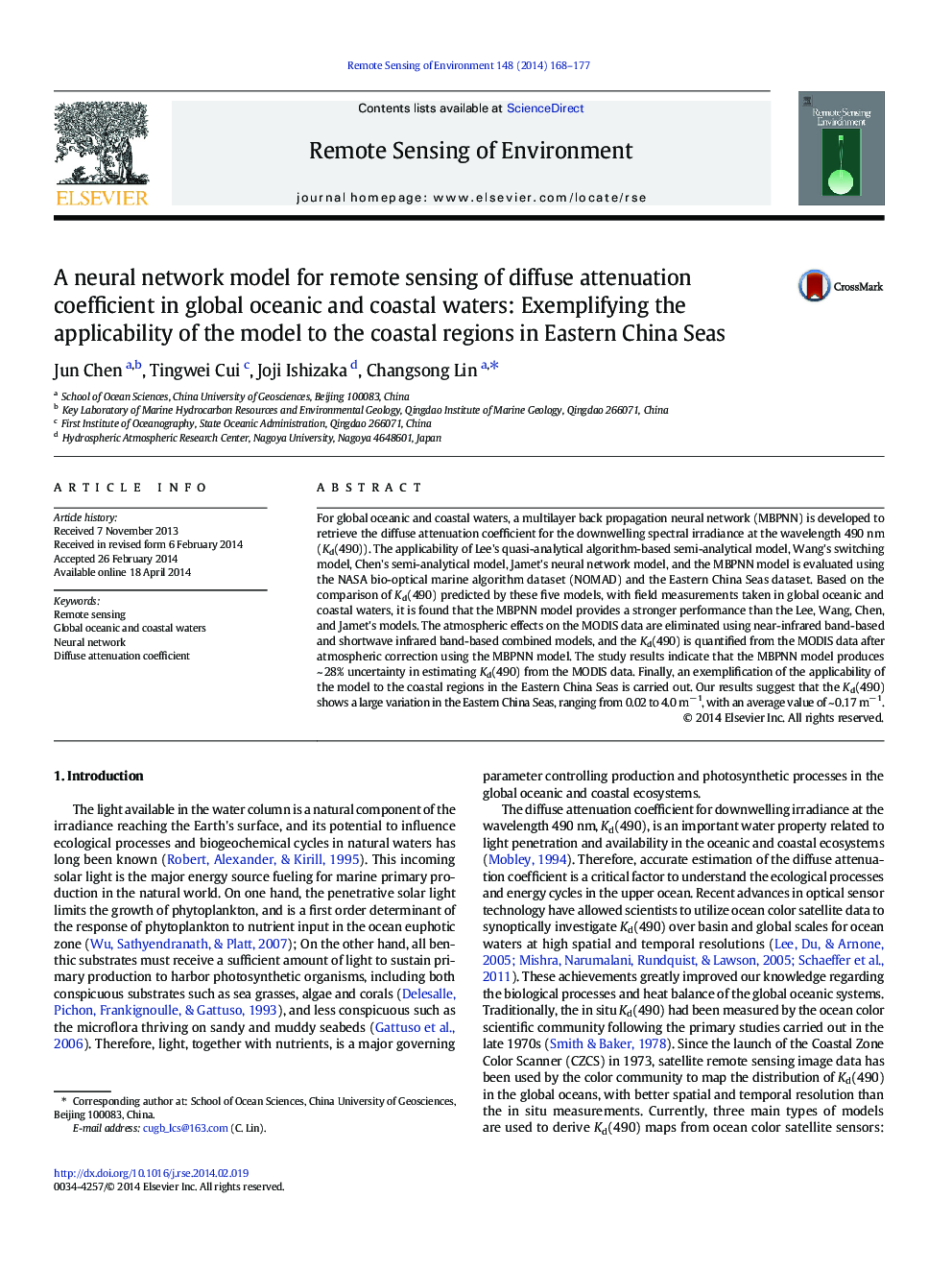| Article ID | Journal | Published Year | Pages | File Type |
|---|---|---|---|---|
| 4458899 | Remote Sensing of Environment | 2014 | 10 Pages |
•A MBPNN model was constructed for deriving Kd(490) from global oceans.•MBPNN model produces ~ 28% uncertainty in estimating Kd(490) from MODIS data.•Band ratios are more reasonable than Rrs(λ) as the inputs for neural network model.
For global oceanic and coastal waters, a multilayer back propagation neural network (MBPNN) is developed to retrieve the diffuse attenuation coefficient for the downwelling spectral irradiance at the wavelength 490 nm (Kd(490)). The applicability of Lee's quasi-analytical algorithm-based semi-analytical model, Wang's switching model, Chen's semi-analytical model, Jamet's neural network model, and the MBPNN model is evaluated using the NASA bio-optical marine algorithm dataset (NOMAD) and the Eastern China Seas dataset. Based on the comparison of Kd(490) predicted by these five models, with field measurements taken in global oceanic and coastal waters, it is found that the MBPNN model provides a stronger performance than the Lee, Wang, Chen, and Jamet's models. The atmospheric effects on the MODIS data are eliminated using near-infrared band-based and shortwave infrared band-based combined models, and the Kd(490) is quantified from the MODIS data after atmospheric correction using the MBPNN model. The study results indicate that the MBPNN model produces ~ 28% uncertainty in estimating Kd(490) from the MODIS data. Finally, an exemplification of the applicability of the model to the coastal regions in the Eastern China Seas is carried out. Our results suggest that the Kd(490) shows a large variation in the Eastern China Seas, ranging from 0.02 to 4.0 m− 1, with an average value of ~ 0.17 m− 1.
